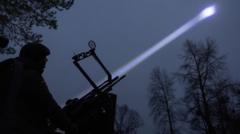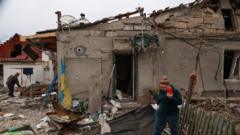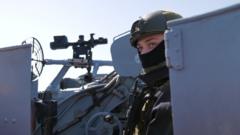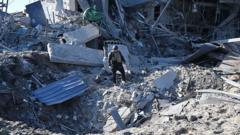**Repeated attempts at ceasefire in Ukraine have been thwarted by deep-rooted mistrust and ongoing violence, with both sides accusing each other of violations, further complicating the road to peace.**
**Ceasefire Efforts in Ukraine: A Cycle of Broken Promises**
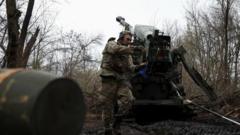
**Ceasefire Efforts in Ukraine: A Cycle of Broken Promises**
**Years of Unfulfilled Agreements Mars Peace Efforts Amid Ongoing Conflict**
Attempts to broker a ceasefire in Ukraine seem perpetually undermined by a history of broken agreements and mistrust. The latest effort, an "Easter truce," was declared by Russian President Vladimir Putin and lasted a mere 30 hours, amid claims of violations by both Ukrainian and Russian forces. Authorities in Kyiv reported a day without air raid alerts, which led President Volodymyr Zelensky to suggest that this temporary reprieve could be extended, although previous efforts never materialized in lasting agreements.
The United States has also been involved in trying to mediate a 30-day ceasefire in the past, highlighting the ongoing challenges in achieving even a short pause in the fighting. Russia, for its part, has posed stringent prerequisites for any negotiation, including halting Ukraine's military capabilities and addressing what it refers to as the "underlying causes" of the conflict.
One fundamental issue complicating negotiations stems from a long history of failed ceasefire agreements. Zelensky has voiced his frustration over Russia allegedly violating 25 such agreements since 2014, during discussions with former President Donald Trump. Conversely, Russia has accused Ukraine of failing to adhere to the terms of any agreement, perpetuating an environment of skepticism.
Analysis from independent experts generally indicates that Russia holds greater responsibility for the failure of these truces, yet it is acknowledged that both sides carry some blame. Statements from Russian officials imply a willingness to negotiate only if their aims—such as a demilitarized and non-aligned Ukraine—are met. The backdrop of these strained diplomatic endeavors is deeply rooted in events following Russia's 2014 annexation of Crimea, which contravened international agreements pledging respect for Ukraine's territorial integrity.
The history of ceasefire attempts from the first Minsk agreement in 2014 to the more recent "Easter truces" illustrates a pattern of quick breakdowns and renewed aggression. The first major ceasefire agreement, signed in Minsk, was violated almost immediately, with reports of fighting resuming shortly after its enactment. Subsequent ceasefires similarly failed, often within minutes or hours, including those intended to facilitate humanitarian needs, such as school and harvest periods.
Military analysts contend that the Kremlin's lack of genuine intention to pursue a peaceful resolution has perpetuated this cycle of conflict. "The underlying challenge," says Matthew Savill of RUSI, "has been the persistent Russian military threat." Moreover, John Herbst, a former U.S. ambassador to Ukraine, labels Russia as the continuous violator of the Minsk accords, arguing that the pressure remains heavily weighted against Ukraine.
Verifying occurrences of ceasefire violations poses challenges, particularly in regions of Ukraine under Russian control, where independent journalism is severely restricted. Reports of offenses are often politicized, with claims on both sides adding to the complexity of accountability.
Despite international calls for a ceasefire, including from Trump, the likelihood of an enduring peace agreement seems remote, particularly as Russia's demands seem to suggest a wider agenda aimed at weakening Ukraine's sovereignty. The tense political landscape leaves little room for compromise, raising questions about what the future holds for both nations and the prospect of lasting peace amid the backdrop of ongoing conflict.


